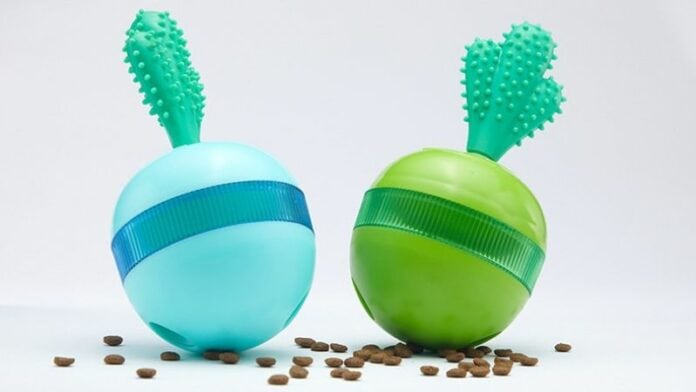Overview of Modern Pet Toys
Modern pet toys have come a long way, adapting to the needs of pets and their humans. The market now offers options for play, safety, and enrichment, all aimed at making pets’ lives better.
From interactive gadgets to plushies, there’s something for every personality and energy level out there.
Popular Types of Pet Toys
Pet toys these days cover a surprising range of purposes. Here are some of the favorites:
-
Chew Toys: Tough and long-lasting, these keep dogs busy and help with dental care.
-
Tug Toys: Perfect for playtime together, these encourage bonding and get everyone moving.
-
Fetch Toys: Think balls and frisbees—timeless classics that get pups running and instincts kicking in.
-
Plush Toys: Soft, snuggly, and sometimes squeaky—for comfort or just a little chaos.
Honestly, picking the right toy comes down to knowing your pet’s quirks and what makes them tick.
Changing Consumer Preferences
More people have pets than ever, and that’s definitely shaking up which toys end up in our homes. Owners are starting to care as much about mental and emotional enrichment as physical exercise.
So, toys aren’t just for play anymore. People are looking for:
-
Interactive Toys: Stuff that gets pets thinking and solving problems.
-
Eco-Friendly Options: Toys made with the planet in mind—sustainable and guilt-free.
-
Customizable Toys: More folks want unique toys that match their pet’s vibe.
It’s honestly worth thinking about these factors next time you’re shopping for your furry sidekick.
Impact of Pet Humanization
Let’s face it—most of us see our pets as family now. This shift is changing the toy aisle in big ways.
Toys are starting to mirror human products, with features like:
-
Tech-driven interactive play for pets that crave more than a ball.
-
Designs that encourage real connection and mimic natural behaviors.
If you’re the type to splurge a little, you’re not alone. The focus is shifting toward quality and toys that genuinely add to pets’ lives.
Market Growth and Regional Trends
The global pet toy market isn’t slowing down. More people have pets, and they’re willing to spend, which is shaping the industry in fascinating ways.
Global Pet Toys Market Size and Forecast
Numbers don’t lie—the pet toys market hit $8.4 billion in 2023 and is on track for $15.77 billion by 2032. That’s a CAGR of 8.1% from 2025 to 2032.
More adoptions and a push for sustainable products are fueling all this growth. Expect to see even more interactive and health-focused toys on the shelves soon.
With so many choices—chew toys, plush toys, and everything in between—it’s a good time to be a pet owner (or a pet, honestly).
Key Regional Markets
North America is leading the pack, holding a 35% share of the market. The U.S. alone snagged 31.86% of global revenue in 2023, with a projected 8.5% CAGR through 2030.
Asia-Pacific is catching up fast, especially in places like China and India, where more people are bringing pets home and seeking out premium toys.
This opens doors for brands like Kong, Jolly Pets, and Petmate to reach new customers and try fresh ideas.
Major Pet Toy Manufacturers
The big names in pet toys are hard to miss. Kong, Nylabone, and ZippyPaws are all about quality and clever designs.
Kong’s durable chew toys are basically legendary. Jolly Pets brings the fun with interactive gear, and others like Petmate and Petsport are making waves with eco-friendly options.
According to the American Pet Products Association, these companies set the pace for the industry and influence what ends up in our carts.
Rise of Interactive and Smart Pet Toys
Tech is shaking up the pet toy world. Interactive and smart toys are giving pets new ways to play, and honestly, they make life easier for us, too.
These toys aren’t just fun—they get pets moving and thinking, and sometimes, they even make us feel a little less guilty for being busy.
Features of Interactive Pet Toys
Interactive toys are more than just flashy colors. Many respond to your pet’s actions, using sensors to light up or make noise when they’re played with.
Some even hand out treats for a job well done. It’s a clever way to keep pets interested and mentally sharp.
Others double as puzzles or exercise tools—think lasers or treat mazes—so pets stay busy and burn off energy.
Smart Technology Integration
Smart toys are taking things up a notch. Many connect to your phone, letting you control them from anywhere, which is pretty wild.
Some work on timers, keeping pets entertained even when you’re not around. That’s a lifesaver for busy folks.
And yes, some have cameras, so you can check in and see what your pet’s up to while you’re out. It’s oddly comforting.
Role of Artificial Intelligence and IoT
AI and IoT are sneaking into pet toys, and it’s actually pretty cool. AI lets toys adapt to how your pet plays, tweaking the challenge as needed.
Maybe a toy gets harder as your dog gets smarter—keeps things interesting. IoT, meanwhile, tracks activity and can even send you a nudge if your pet’s been a couch potato.
It’s a smart way to keep tabs on your pet’s health and make sure they’re getting enough playtime.
Product Innovation and Diversification
Innovation is everywhere in pet toys. Subscription boxes, custom designs, and multi-use toys are all popping up, giving pet owners more ways to spoil their companions.
Trends in Subscription Boxes
Subscription boxes are having a moment. Every month, a box of toys, treats, and surprises lands on your doorstep—what’s not to love?
You can pick boxes based on your pet’s size, age, or quirks. It’s a fun way to try new things without much effort.
For retailers and brands, these boxes build loyalty and help get their products in front of more people.
Customizable and Personalized Designs
People are really into toys that feel unique. Customizable options let you add your pet’s name, pick colors, or choose shapes that match their play style.
It’s a small thing, but it makes the toy feel special. Plus, it’s a nice way to show off your pet’s personality.
Manufacturers and specialty shops are catching on, offering more ways to personalize and connect with customers.
Multifunctional and Enrichment Toys
Multifunctional and enrichment toys are on the rise. These toys mix physical activity with mental puzzles—think treat dispensers that double as brain teasers.
Pet stores are stocking more of these, catering to owners who want their pets to be healthy and happy.
As more people treat pets like family, the demand for these creative toys is only going up. Brands are responding with products that focus on both fun and well-being.
Focus on Safety, Durability, and Materials
Let’s talk about safety and durability. It’s not just about fun—nobody wants a toy that falls apart or isn’t safe for their pet.
Manufacturers are starting to take these concerns seriously, which is reassuring.
Durable and Non-Toxic Materials
Look for toys made from durable and non-toxic materials—stuff like tough rubber, sturdy cloth, or safe plastics.
Labels like BPA-free or phthalate-free are a good sign. And always check for small parts that could come loose.
Regularly inspect toys for damage. If they’re getting worn out, just swap them out. Better safe than sorry, right?
Industry Safety Standards
There are set industry safety standards for pet toys. Companies need to test for toxic substances and make sure toys are strong enough for rough play.
Look for certifications like the ASTM mark—it means the toy’s been put through the wringer.
If you’re ever unsure, ask the manufacturer about their safety process. It’s your right, and it helps you feel good about what you’re buying.
Eco-Friendly and Sustainable Options
Eco-friendly toys are getting more popular, and for good reason. More brands are using organic cotton or responsibly sourced rubber.
Biodegradable toys are a solid choice—they break down after use, which is better for the planet. Some brands really lean into their sustainability mission, and that’s worth supporting.
Choosing green toys means you’re helping the environment and keeping your pet safe. Plus, there are more options than ever, so you don’t have to compromise.
Evolving Retail Landscape and Distribution Channels
The way we shop for pet toys is changing fast. Online shopping is booming, but boutique and specialty stores still have a big influence.
Growth of Online Sales
Online sales for pet toys are through the roof. Shopping from your couch? Yes, please.
-
Sales Surge: Online sales have jumped by about 15.6% each year recently.
-
Ease of Access: It’s easy to compare, read reviews, and find exactly what you want.
You’ll find more brands and sometimes exclusive items online. Retailers with a strong online game are winning right now.
Influence of Pet Boutiques and Specialty Stores
Boutiques and specialty shops are still big players. They stock unique, often high-end toys you won’t see at big-box stores.
-
Specialized Selection: These shops focus on niche brands and custom toys for specific needs.
-
Community Engagement: Events and in-person advice build loyalty and a sense of community.
Shopping in person lets you discover new favorites and get tips from staff who actually know their stuff. Sometimes, it’s just nice to chat with someone who loves pets as much as you do.
Role of E-Commerce in Accessibility
E-commerce platforms are making pet toys more accessible to you. With so many retailers shifting online, it’s honestly kind of wild how many different products you can stumble across.
-
Wide Range of Choices: You can easily browse different categories, from interactive toys to natural chewables.
-
Competitive Pricing: Online shopping often leads to better deals and price comparisons.
You get to shop whenever you want, squeezing it in between meetings or late at night if that’s your thing. It’s just more convenient, and you end up with more options to choose from for your pet.



















